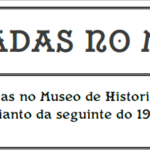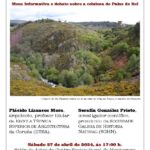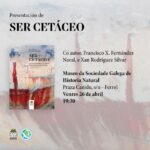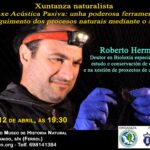
After several months of preparatory works and different arrangements, on 26th May 1997, Sociedade Galega de Historia Natural applied to the authorities with jurisdiction on this matter (Spanish Ministry of Environment, Autonomic Government of Castile and León and Autonomic Government of Galicia) for the development of an ordinance plan concerning natural resources for the Courel and Enciña da Lastra mountain ranges in order to be later declared as a Natural Park. Likewise, SGHN sent a copy of this application, together with an explanatory letter, to the mayors of the sixteen municipalities of the provinces of León, Lugo and Ourense. These municipalities would be benefited by the official recognition as a Natural Park.
It would be the most noteworthy Galician protected area due to its surface area (87 400 ha in total; 65 354 of which are in Galicia) and undeniable landscape interest. Moreover, it would have an entity of its own in the network of the natural areas of the Iberian north west natural areas. The proposed Natural Park includes the Courel, Oribio and Rañadoiro mountain ranges, the mountain ranges from the Leónese Bierzo that border Lugo to the south of the Spanish highway N-VI, the Cereixidos, Cabalos, Enciña da Lastra mountain ranges and Penedos de Oulego.
The SGHN initiative of promoting the declaration of the Courel and Enciña da Lastra mountain ranges emerged from the concern and advocacy of sustainable development, in economic and ecological terms, in this natural area. We were convinced that the environmental conservation would only be achieved if the quality of life of the inhabitants is improved.

Courel and Enciña da Lastra Natural Park map suggested by the SGHN
Geological and geomorphological values
The environmental reasons for declaring the Courel and Enciña da Lastra mountain ranges, which represent a bio-geographic natural unit, as a Natural Park are just overwhelming because they are geomorphologically and geologically outstanding:
- They are rich in the formation of low-lying periglaciation and glaciers, particularly the valleys of Seara, Visuña and Romeor in which deposits and forms of glacial origin are found. Also noteworthy is the Lucenza lagoon found in Seara valley.
- They have kars formations such as paleokarst, caves, sinks and upwellings.
- They possess calcarious escarpments of great natural beauty (Pena Falcoeira on the left image).
- They have an original fluvial landforms barely changed by anthropic activity.
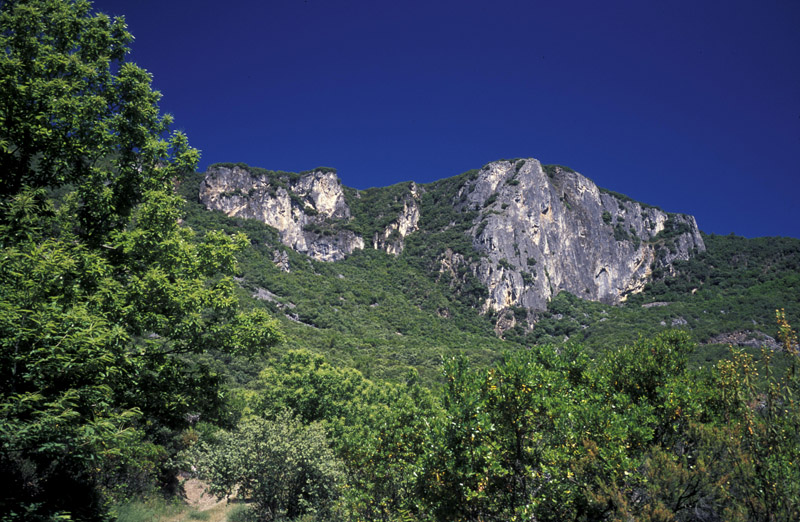
Pena Falcoeira 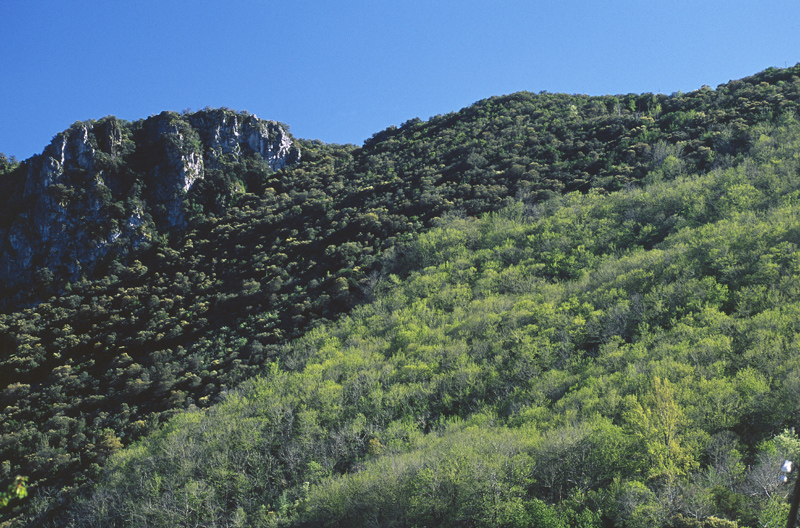
Ladeira de Covas 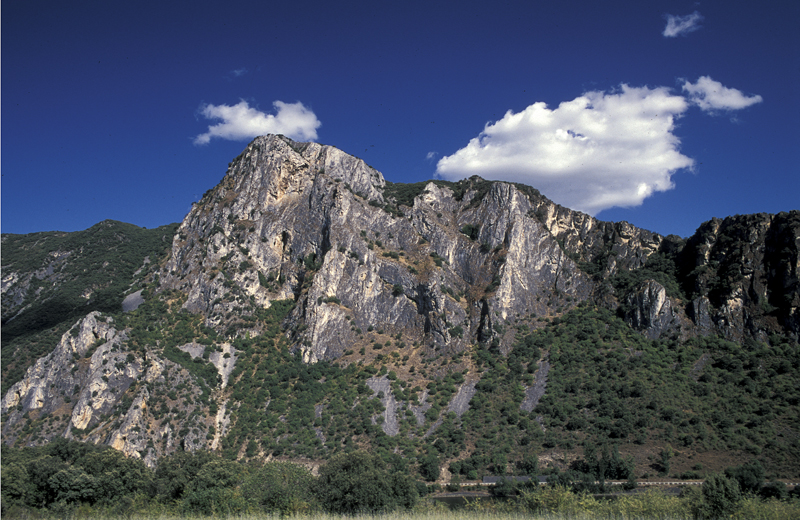
Penarrubia
Botanical values
They hold an outstanding botanical value in the larger frame of the Iberian Peninsula because of:
- Their enormous wealth of flora since there are more than 1000 vascular species. For information purposes, it is worth stressing that this figure represents about half of the total Galician flora in just 2 percent of its surface area.
- The presence of 2 exclusive endemisms (Petrocoptis grandiflora and Rhamnus legionensis), found only in this corner of the world, and 9 restricted-distribution endemisms (Armeria rothmaleri, Campanula adsurgens and Leontodon farinosum among others).
- The presence of one quarter of the plant communities gathered by the Habitat Directive in Galicia (eight of those were granted a priority for conservation) which constitute the cornerstone for the integration of a territory in the European Union’s Natura 2000 network.
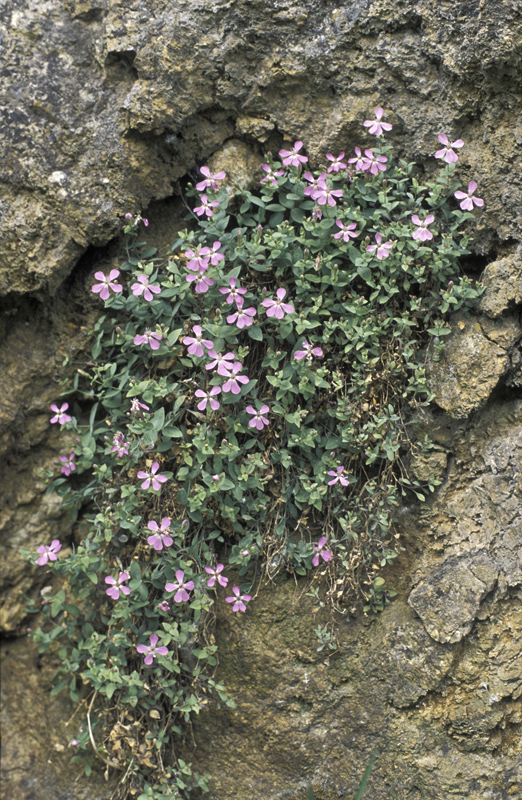
Petrocoptis grandiflora 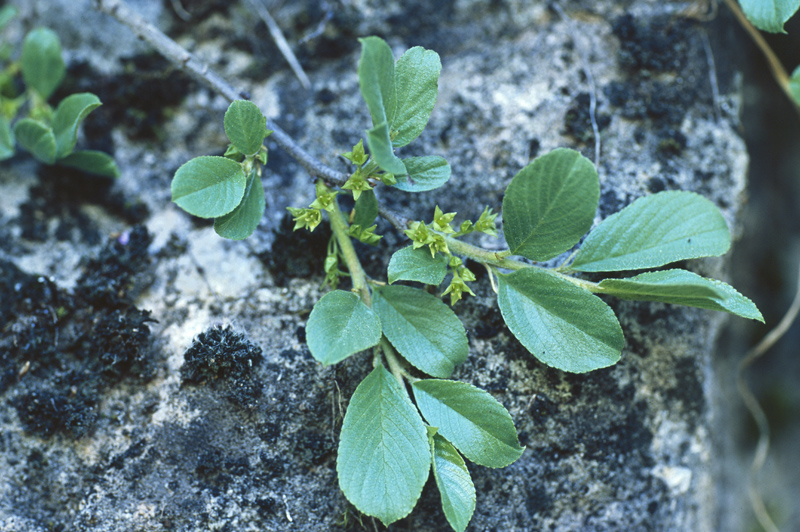
Rhamnus legionensis
Faunal values
They possess a remarkable faunal value because of:
- The existence of more than 190 species of vertebrates which constitute almost all the vertebrate species of the northwest of the Iberian Peninsula.
- Being a member of an Importan Bird Area (IBA) which is why, according to the Birds Directive, their conservation is considered to be of community interest by the EU.
- The presence of at least 8 species (Egyptian vulture, short-toed snake eagle, Montagu’s harrier, golden eagle, Bonelli’s eagle, peregrine falcon, wolf and otter) out of the 18 most useful species for the system of faunal indicators applicable to the planning and management of the Iberian Peninsula environment.
- The existence of important chiropteran populations, including the main Miniopterus schreibersi colony in Castile and León and Galicia. This is also one of the five largest in the Iberian Peninsula.
- Holding the richest range of faunal communities in Galicia and one of the richest in Castile and León given its biocenosis, a typical feature from the Mediterranean and Eurosiberian regions.
- The richness of their carnivorous mammal communities (wolf, fox, stoat, least weasel, common ferret, pine marten, beech marten, otter, common genet and wildcat).
The existence of unique animal communities in anthropized environments. This constitutes one of the latest examples of wild animals joining traditional human environments. In addition, these possess significant etnographic values.
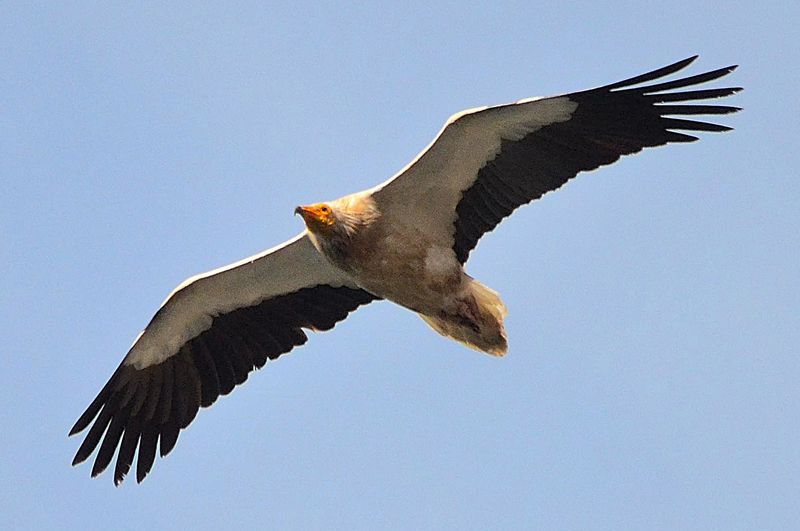
Voitre branco / Egyptian vulture (Neophron percnopterus) 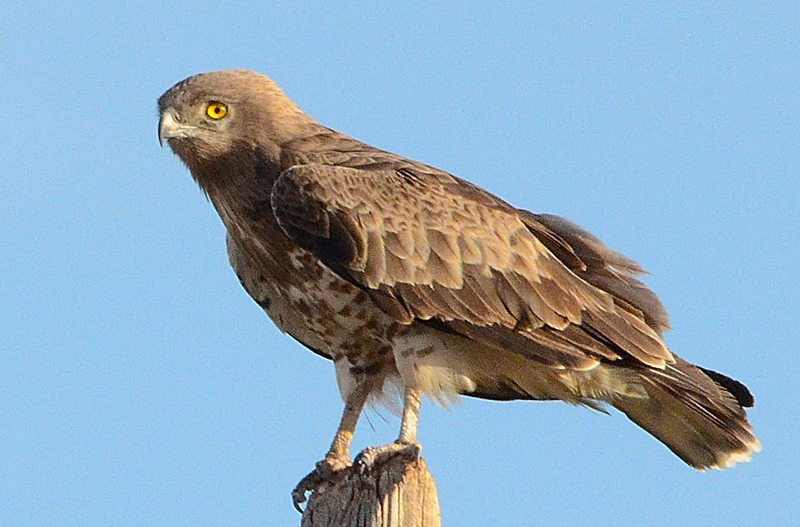
Águia albela / Short-toed snake eagle (Circaetus gallicus)
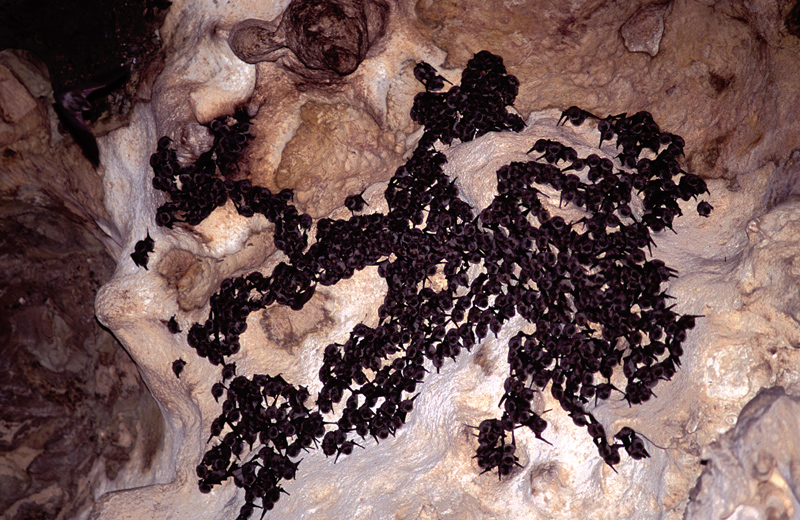
Morcego de cova /
Schreibers’ Bent-winged bat (Miniopterus schreibersi)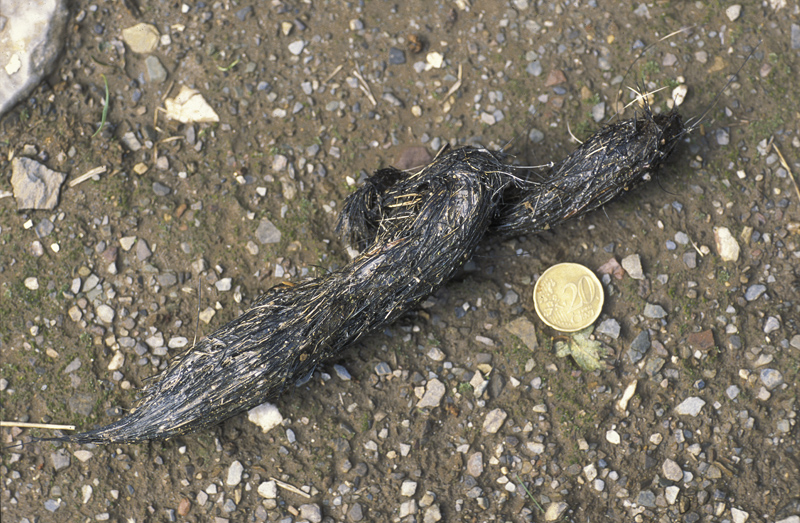
Excremento de lobo / Wolf excrement (Canis lupus)
Etnographical and cultural values
- They have prominent landscape values due to the use of agrosilvopastoral systems adapted to the different mountain setting conditions.
- They hold remarkable cultural values, both prehistorical (Celtic hillforts and signs of Paleolithic occupation) and historical (signs of the process of Romanization and the onset of the Way of Saint James).
Sustainable Development Support
The Courel and Enciña da Lastra mountain ranges can still reach a sustainable economic developent if the World Conservation Strategy drafted by the United Nations Environment Programme (UNEP), the World Wildlife Fund (WWF) and the International Union for Conservation of Nature (IUCN) is applied. This strategy includes the following principles:
- Ecologic sustainability in order to make development compatible with maintaining ecological processes, biodiversity and biological resources.
- Economic sustainability in order to make development economically efficient and equitable among and within generations.
- Social sustainability in order to achieve a form of development that could give people more control over their lives, as well as preserve and strengthen community identity.
- Cultural sustainability in order to make development compatible with the culture and values of every stakeholder.
Furthermore, legal measures should be implemented for their protection in accordance with the spirit and the letter of Law 4/89 of Conservation of the Natural Spaces and the Wild Flora and Fauna, now replaced by Law 42/2007 of Natural Heritage and Biodiversity [Spanish].
Scientific support for the campaign
All these scientific and environmental arguments should be sufficient to make different authorities take the initiative in declaring the Courel and Enciña da Lastra mountain ranges as a Natural Park. Even if this did not happen, the proposal by SGHN received support from 50 researchers of the University of León (Plant and animal biology department), the University of the Basque Country (Plant biology and ecology department), the University of Santiago de Compostela (Plant biology, Ecology and Geography departments), the University of Vigo (Sciences Faculty) and the Spanish National Research Council (Doñana Biology station, Royal Botanical Garden of Madrid and the Galician Institute for Agro-biological Reasearch).
An important, albeit partial, victory was achieved by the SGHN’s campaign and the extremely valuable support it received. The Department of the Environment of the Galician government officially declared the Enciña da Lastra a Natural Park with an area of 3151 ha by means of Decree 157/2002 of 4 April 2002, after its natural resources ordinance plan was approved through Decree 77/2002 of 28 February 2002. The news were undoubtedly great since it involved the protection of the Enciña da Lastra mountain range, one of the most valuable and threatened treasures of the Galician natural heritage. (See also…).
Text translated by Sergio Méndez Fernández (student of the Degree of Translation and Interpretation of the University of Vigo)


